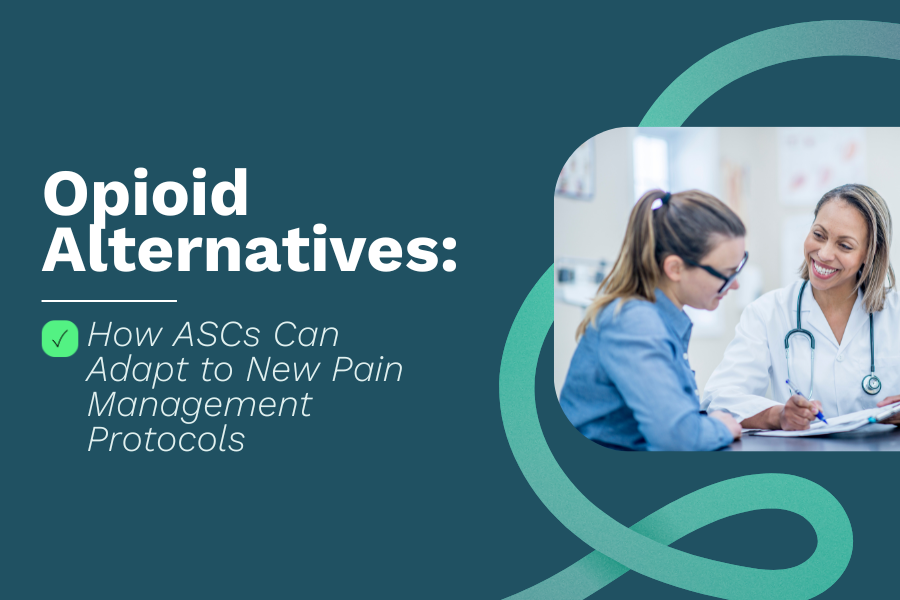ASC Pain Management: Adapting to Safer, Smarter Protocols
Introduction: The Evolution of ASC Pain Management
Pain management is one of the most rapidly evolving areas in healthcare, and Ambulatory Surgery Centers (ASCs) are leading this transformation. As facilities focus on enhancing recovery and reducing opioid reliance, ASC pain management protocols are shifting toward safer, multimodal strategies that combine innovation with patient safety.
These changes don’t just influence care—they also affect how ASCs store, track, and secure medications to maintain compliance with DEA and state regulations.
Why Pain Management in ASCs Is Changing
For years, opioids were the primary solution for postoperative pain relief. However, increasing awareness of addiction risks and tighter regulations have led ASCs to explore more balanced approaches. Today, ASC pain management emphasizes comfort, safety, and compliance through a combination of techniques and technologies.
1. Multimodal Pain Management
ASCs are now integrating non-opioid pain medications like NSAIDs, acetaminophen, and local anesthetics to provide effective pain relief while reducing opioid exposure.
2. Regional and Local Anesthesia
Advanced anesthesia techniques, such as nerve blocks and infiltration, help minimize systemic opioid use and improve recovery times.
3. Non-Pharmacologic Approaches
More ASCs are integrating physical therapy, cryotherapy, and behavioral interventions into recovery plans. These methods complement medication-based strategies and support a holistic approach to pain control.
Medication Management in Modern Pain Protocols
As ASC pain management evolves, medication management systems must adapt. Even though opioids play a smaller role, controlled substances still require secure handling, accurate documentation, and compliance with federal standards.
Here’s how ASCs can stay compliant while improving workflow and security:
1. Right-Sized Inventory, Stronger Controls
Fewer opioids don’t mean fewer regulations. Every controlled substance must still be stored securely and logged accurately.
2. Diversion Prevention Remains Essential
Drug diversion risks persist in every healthcare environment. Smart cabinets like MedServe’s secure storage systems ensure real-time tracking, biometric authentication, and detailed access logs to prevent unauthorized access.
3. Automated Documentation and Compliance
With the rise of multimodal protocols, digital medication management systems simplify recordkeeping by automatically generating audit-ready logs and syncing with EHR systems.
4. Streamlined Medication Workflows
Efficient medication access is vital for surgical care. Automated dispensing, real-time inventory updates, and integration with ASC pain management protocols reduce manual tasks and improve accuracy.
MedServe Solutions for ASC Pain Management
As ASCs implement safer and smarter pain protocols, MedServe provides the security and compliance infrastructure to support them. Our secure narcotic cabinets are designed to help facilities streamline medication storage and access while meeting DEA and state requirements.
Key Benefits of MedServe Secure Cabinets:
✔️ Regulatory Compliance: Fully compliant with DEA and state standards.
✔️ Advanced Security: Tamper-resistant design, user authentication, and digital tracking.
✔️ Workflow Integration: Seamlessly fits into ASC pain management processes.
✔️ Operational Efficiency: Reduces administrative time and improves medication accuracy.
Strengthen Pain Management with Secure Medication Storage
Effective ASC pain management depends on balancing patient comfort, safety, and compliance. With MedServe’s secure storage solutions, your facility can confidently manage both opioid and non-opioid medications while maintaining efficient workflows.
💬 Ready to upgrade your ASC’s pain management system?
Book a demo with MedServe to explore how our secure cabinets support compliance and patient care.

